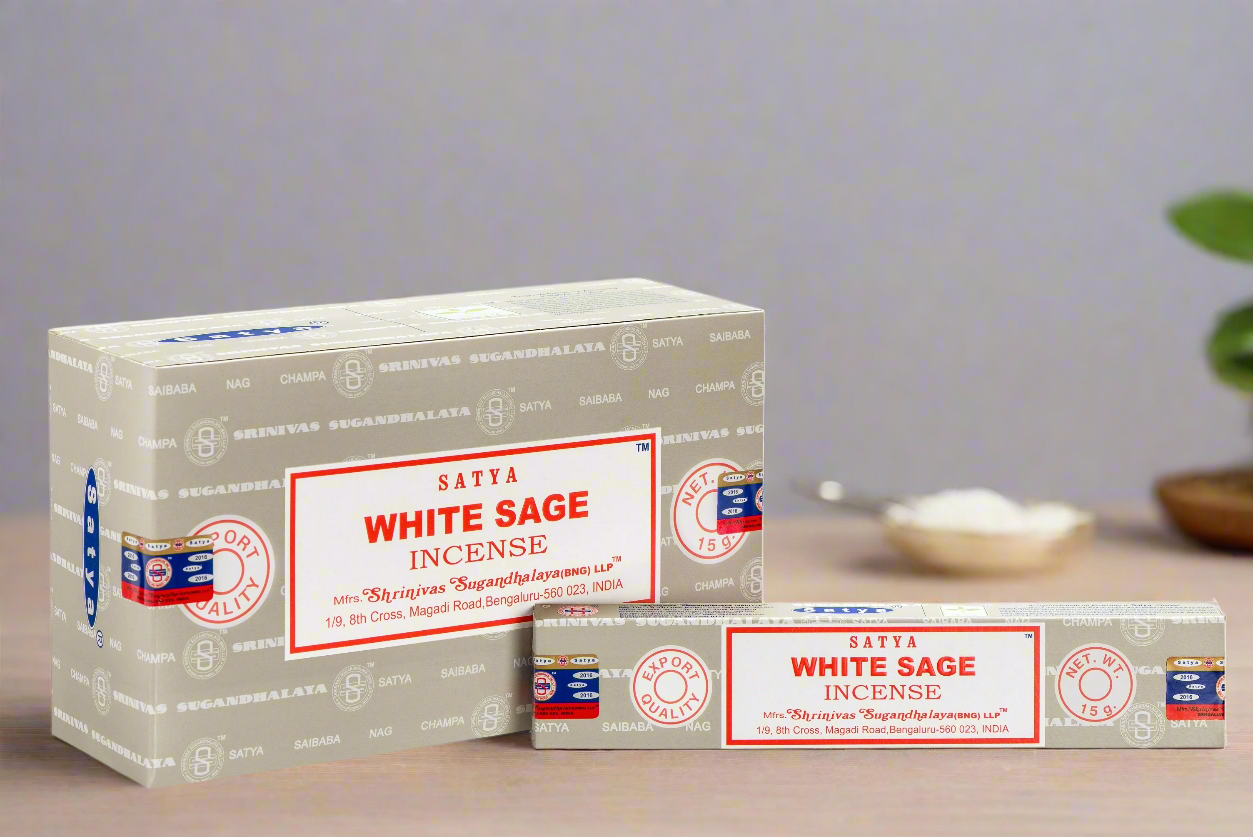A Complete Guide to the Different Types of Incense
Share
Incense has been used for thousands of years in spiritual rituals, religious ceremonies, meditation practices, and as a simple way to make a space smell wonderful. But not all incense is the same—there are many different types, each with its own history, form, scent, and purpose. Whether you're a seasoned incense lover or just beginning your journey into aromatic bliss, this guide will introduce you to the many types of incense and help you choose the right one for your needs.
What Is Incense?
Incense is made by combining aromatic plant materials with essential oils or resins. When burned, it releases fragrant smoke that can calm the mind, uplift the spirit, or simply make a room more pleasant. The word "incense" comes from the Latin word incendere, meaning "to burn."
Across cultures and continents, incense has taken on different forms and meanings—from the elaborate rituals of Japan to the temples of India and the monasteries of Tibet. Let’s explore the many types of incense and what makes each one unique.
1. Stick Incense
Stick incense is one of the most common forms and comes in two main varieties: with a bamboo core and without.
a. Bamboo-Core Stick Incense (Joss Sticks)
This is the most widely recognized type, especially in Indian and Chinese traditions. A bamboo stick is coated with a mixture of incense materials and binding agents. When burned, the flame consumes both the incense and the stick, releasing its scent.
-
Popular in: India, China, Southeast Asia
-
Common scents: Sandalwood, rose, jasmine, patchouli
-
Uses: Religious ceremonies, meditation, aromatherapy, daily use
b. Coreless Stick Incense
This type is more common in Japanese incense traditions. It doesn’t have a bamboo stick, so it burns cleaner with less smoke and no residual ash from a wooden core.
-
Popular in: Japan
-
Common scents: Aloeswood (agarwood), sandalwood, green tea, floral blends
-
Uses: Zen meditation, tea ceremonies, quiet personal rituals
2. Cone Incense
Cone incense is shaped like a small pyramid or cone. It burns from the tip downward, creating a rich, concentrated fragrance in a short time.
-
Popular in: Western countries, Japan, India
-
Advantages: Fast burn, intense aroma, no stick residue
-
Best for: Quick aromatic bursts, large spaces, decorative burners
Tip:
Some cone incense is specially designed for backflow burners, which create a visual smoke effect that flows downward like a waterfall—adding a calming, aesthetic experience to your space.
3. Coil Incense
Coil incense is shaped like a spiral or coil and is designed for long-lasting burn times, sometimes up to 24 hours or more.
-
Popular in: China, Vietnam, Buddhist temples
-
Common scents: Cedarwood, agarwood, sandalwood
-
Uses: Religious temples, long meditation sessions, home fragrance
Ideal For:
Large rooms or outdoor spaces where long-lasting fragrance is needed. You'll often see these hanging from temple ceilings in East Asia.
4. Resin Incense
Resin incense is one of the oldest forms of incense, made from hardened sap or gum of aromatic trees and plants. Rather than being rolled onto a stick or shaped into a cone, resin incense is burned on charcoal discs or in electric burners.
-
Popular in: Middle East, Africa, Christian and Orthodox churches
-
Types of resin: Frankincense, myrrh, copal, benzoin, dragon’s blood
-
Uses: Spiritual rituals, deep meditation, cleansing spaces
Burning Tip:
Resins need a charcoal burner. Light the charcoal, place it in a heatproof dish, and sprinkle the resin on top. The smoke released is often more powerful and purifying than other incense types.
5. Powder Incense
Powder incense is finely ground and is often used in traditional ceremonies. It can be sprinkled over burning charcoal or formed into shapes and burned directly.
-
Popular in: Japan (used in Kōdō, the "Way of Incense"), Tibet, shamanic practices
-
Common ingredients: Sandalwood, cinnamon, clove, herbs
-
Uses: Ceremonial, symbolic rituals, custom blends
Powder incense gives you full control over how much to use and can be used to create your own custom incense recipes by mixing different powders together.
6. Rope Incense
Rope incense is made by rolling powdered incense into thin paper (often rice or lokta paper), then twisting it into a rope. It burns from one end like a fuse.
-
Popular in: Nepal, Tibet
-
Common scents: Juniper, cedar, sandalwood, Himalayan herbs
-
Uses: Tibetan Buddhist rituals, meditation, space purification
Rope incense is a favorite for those who want a rustic, earthy feel. It burns with a gentle but rich aroma and is ideal for outdoor or ceremonial use.
7. Dhoop Incense
Dhoop is a dense incense that comes in thick, stick-like cylinders without a bamboo core. It's often much stronger and smokier than traditional stick incense.
-
Popular in: India
-
Common ingredients: Sandalwood, guggul, camphor, herbs
-
Uses: Hindu pujas (rituals), temple offerings, spiritual cleansing
Some varieties, like "Sambrani dhoop," are used in traditional Ayurvedic healing and postpartum care for their warming and purifying properties.
8. Herbal & Botanical Incense
This type of incense uses raw herbs, leaves, petals, and other plant materials. Rather than being compressed into sticks or cones, it may be loose and burned on charcoal.
-
Popular in: Indigenous rituals, shamanic traditions, witchcraft
-
Common plants: White sage, palo santo, lavender, rosemary
-
Uses: Smudging, energy clearing, protection rituals, home blessings
These are often used in bundles (e.g., sage smudge sticks) or burned in small amounts in fireproof bowls.

